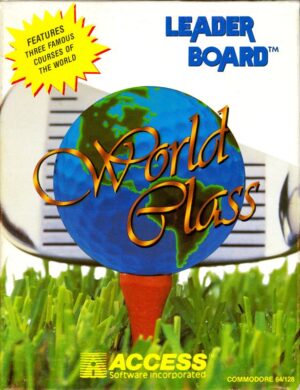Retro Replay Review
Gameplay
Starfire places you at the helm of Earth’s last surviving starship, thrusting you into a desperate fight against the relentless Xtardan armada. From the moment you select your difficulty level, the game tailors the number of enemy vessels and replenishment stations to your chosen challenge. This scaling ensures both newcomers and veterans can find a suitable balance of tension and strategic depth.
(HEY YOU!! We hope you enjoy! We try not to run ads. So basically, this is a very expensive hobby running this site. Please consider joining us for updates, forums, and more. Network w/ us to make some cash or friends while retro gaming, and you can win some free retro games for posting. Okay, carry on 👍)
Navigating a procedurally generated 10×10 quadrant grid keeps every playthrough fresh. Each jump may deposit you into a calm sector ripe for planning your next move or thrust you directly into asteroid fields and enemy patrols. This unpredictability encourages careful resource management—energy reserves, shield integrity, and torpedo stockpiles must all be monitored, lest you find yourself stranded in hostile territory.
Combat unfolds in real time, demanding quick decisions under pressure. You must anticipate enemy movements, maneuver to optimal firing angles, and dodge or absorb incoming fire. The inclusion of recharge battlestations scattered across the grid adds a risk–reward layer: will you detour to top up shields and weapons, or press on and face the Xtardan fleet on dwindling reserves?
Beyond direct engagements, strategic planning plays a crucial role. Plotting jump routes that minimize fuel usage, prioritizing high-threat sectors, and managing the information gleaned from sensor scans elevate Starfire above a simple arcade shooter. The sense of responsibility in commanding humanity’s final warship is palpable, and every successful mission feels like a hard-fought victory.
Graphics
Starfire’s visual style leans heavily into the aesthetic of early science-fiction, drawing obvious inspiration from classic Star Trek designs. The starship schematics and damage displays are rendered in crisp monochromatic lines, giving a nostalgic feel that harkens back to the genre’s golden age. While simple by modern standards, this presentation exudes charm and clarity.
The quadrant map, with its grid overlay and minimalistic icons, is functional and immediately understandable. Enemy ships, asteroid fields, and battlestations are distinct at a glance, allowing you to focus on strategy rather than deciphering complex visuals. This straightforward approach ensures that gameplay remains front and center.
During combat sequences, laser beams and torpedo trails animate smoothly across the screen, and impact effects—though modest—effectively communicate damage and shield depletion. Background starfields shift subtly as you navigate, enhancing the illusion of deep space without distracting from the tactical action.
Despite lacking high-resolution textures or 3D models, Starfire’s graphics succeed through clear design and purposeful simplicity. Every visual element serves a gameplay function, ensuring you’re always informed about your ship’s status and the surrounding threats without unnecessary flair.
Story
At its core, Starfire spins a classic “last ship standing” narrative: the Earth Space Agency has been decimated, and only one vessel remains to halt the Xtardan onslaught. This setup immediately raises the stakes and casts you in the role of humanity’s beacon of hope. The minimalist exposition leaves much to the imagination, allowing players to project themselves into the mission commander role.
While the plot’s framework is straightforward, occasional mission briefings and in-game alerts provide just enough context to maintain immersion. You learn bits about the Xtardans’ tactics, the whereabouts of hidden battlestations, and the dwindling morale back on Earth. These narrative snippets punctuate the action, reminding you that failure means more than just a lost game—it spells the end of civilization as we know it.
The game’s reliance on procedural encounters also contributes to emergent storytelling. No two campaigns unfold the same way: you might discover a cluster of asteroids concealing a derelict Xtardan scout, or stumble upon an isolated rescue mission that details the fates of previous commanders. These unexpected events enrich the overarching storyline and foster personal anecdotes that players share long after they dock for the final time.
Although Starfire doesn’t boast deep character arcs or branching dialogue trees, its high-concept premise and sporadic narrative beats are perfectly pitched for its strategic, action-oriented gameplay. The result is a lean but effective story that keeps you invested in every jump, every skirmish, and every calculated risk.
Overall Experience
Starfire excels as a blend of tactical depth and pulse-pounding action. The balance between exploration, resource management, and combat ensures you’re never lulled into complacency. Each mission feels like a high-stakes gamble: pressing forward can yield great rewards, but overstaying in hostile space has dire consequences.
The game’s pacing is remarkably well-judged. Early sectors allow you to get accustomed to navigation and combat, while later quadrants ratchet up the tension with denser enemy formations and fewer recharge opportunities. This dynamic keeps the experience engaging from start to finish, motivating you to refine your strategies and improve your efficiency.
Moreover, Starfire’s nostalgic visual design and concise storytelling create an atmosphere that resonates with fans of classic space operas. The nods to Star Trek aesthetics—without veering into direct imitation—add charm and familiarity, while the original mechanics ensure the game stands on its own merits.
In sum, Starfire delivers a compelling package for anyone who enjoys strategic space combat with a retro flair. Its approachable graphics, thoughtful design, and emergent narrative moments coalesce into a memorable journey through the stars. Whether you’re a veteran commander seeking the ultimate challenge or a newcomer craving a taste of interstellar adventure, Starfire offers a rewarding voyage worth undertaking.
 Retro Replay Retro Replay gaming reviews, news, emulation, geek stuff and more!
Retro Replay Retro Replay gaming reviews, news, emulation, geek stuff and more!









Reviews
There are no reviews yet.